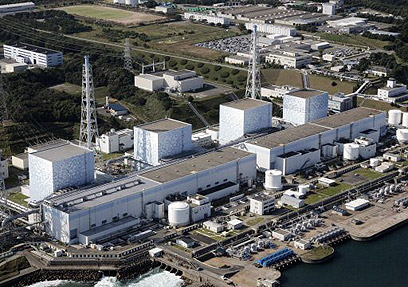
Japanese authorities were battling to contain rising pressure in nuclear reactors damaged by a massive earthquake were forced to release radioactive steam from one plant on Saturday after evacuating tens of thousands of residents from the area.
Tokyo Electric Power Co also said fuel may have been damaged by falling water levels at the Daiichi facility, one of its two nuclear power plants in Fukushima, some 240 km (150 miles) north of Tokyo.
Officials said that so far the level of radiation leakage was small. And Naoto Sekimura, a professor at the University of Tokyo, said a major radioactive disaster was unlikely.
"No Chernobyl is possible at a light water reactor. Loss of coolant means a temperature rise, but it also will stop the reaction," he said.
"Even in the worst-case scenario, that would mean some radioactive leakage and equipment damage, but not an explosion. If venting is done carefully, there will be little leakage. Certainly not beyond the 3 km radius."
Kyodo news agency reported that authorities were evacuating about 20,000 people from the vicinity of the other Fukushima nuclear facility, the Daini plant.
Prime Minister Naoto Kan, who flew by helicopter to view Fukushima by air, had earlier ordered that residents within a 10 km radius be evacuated from the Daiichi plant.

Nuclear facility in Fukushima, Japan (Photo: Reuters)
TEPCO said it had lost ability to control pressure in some of the reactors at its Daini plant as it had with the Daiichi plant. Pressure was stable inside the reactors of the Daini plant but rising in the containment vessels, a spokesman said.
Pressure at one Daiichi reactor may have risen to 2.1 times the designed capacity, the trade ministry said.
Thousands evacuated
The quake and tsunami cut the supply of off-site power to the plant and diesel generators intended to provide back-up electricity to the cooling system.
The cooling problems at the Japanese plant raised fears of a repeat of 1979's Three Mile Island accident, the most serious in the history of the US nuclear power industry.
Equipment malfunctions, design problems and human error led to a partial meltdown of the reactor core at the Three Mile Island plant, but only minute amounts of dangerous radioactive gases were released.
Radiation levels detected at the control unit of the reactors at the Daiichi plant were 1,000 times the normal level, but not yet at a level requiring workers to evacuate, a trade ministry official said.
The Union of Concerned Scientists, a US-based nonprofit organization, said the power failure resulted in one of the most serious conditions that can affect a nuclear plant – a station blackout – during which off-site power and on-site emergency alternating current (AC) power is lost.
Nuclear plants generally need AC power to operate the motors, valves and instruments that control the systems that provide cooling water to the radioactive core. If all AC power is lost, the options to cool the core are limited.
If the core overheats, then the fuel would become damaged and a molten mass could melt through the reactor vessel, releasing a large amount of radioactivity into the containment building surrounding the vessel, the UCS said.
It added that it was not clear if the quake had undermined the containment building to contain pressure from any meltdown and allow radioactivity to leak out.
The reactors shut down due to the earthquake account for 18% of Japan's nuclear power generating capacity.
Nuclear power produces about 30% of the country's electricity. Many reactors are located in earthquake-prone zones such as Fukushima and Fukui on the coast.
The IAEA estimates that around 20% of nuclear reactors around the world are currently operating in areas of significant seismic activity.
It said the sector began putting more emphasis on external hazards after an earthquake hit TEPCO's Kashiwazaki-Kariwa plant in July 2007, until then the largest to ever affect a nuclear facility.
When the earthquake hit the Kashiwazaki-Kariwa nuclear power plant, four reactors shut down automatically. Water containing radioactive material was released into the sea, but without an adverse effect on human health or the environment, it said.
TEPCO had been operating three out of six reactors at the Fukushima Daiichi nuclear plant at the time of the quake, all of which shut down.
- Follow Ynetnews on Facebook















